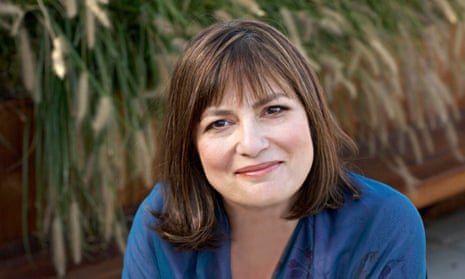Alice Hoffman is the author of 30 acclaimed works of fiction including Practical Magic, The Dovekeepers and The Museum of Extraordinary Things. Her new novel, The Marriage of Opposites, is set in the 1800s in Paris and on the tropical island of St Thomas and tells the story of the rebellious Rachel, and how her son, Camille Pissarro, became a great artist. Hoffman was born in New York and now lives near Boston.
It’s clear that you wanted to get into the mindset of what it was like to be a woman in the 1800s.
I really did. When I first read Wuthering Heights I didn’t understand why Cathy couldn’t marry the person she loved. I didn’t understand the property laws, and the constraints on women. Even though laws have changed we still have so many social constraints and so many rules that we set for ourselves and that society sets for us. It’s very difficult still to be a woman.
Whether characters conform or break the rules shapes the plot of the book…
What interested me most about Rachel is that she was such a rebel, she was willing to break the rules, no matter the price. She’s the woman I wish I was – I wish I had her courage and bravery.
Do you set yourself rules in your writing life?
I don’t think about rules when I’m writing – that’s the great thing about writing: it’s the one place in my life that I can do whatever I want.
Class and racial conflict are compelling themes…
Yes – I wanted to explore how class and race and religion are human constructs that don’t really exist when we take them away.
What was your motivation in fictionalising the life of an artist?
I’m very interested in what conditions make a great artist – how did Camille Pissarro become the father of impressionism? I wanted to get inside his head and the head of his mother. Because Rachel was an outcast and outsider, what else could she expect her son to be? He grew up to be an anarchist and atheist and very much on the side of the working man and woman. I didn’t want it to feel like a history book, though, I wanted it to feel alive.
Like much of your work, the novel is wonderfully rich in magic, folklore and fairy tale. Why is that?
For me, reading and magic always went together. In childhood I was reading all the time; I was very much an escapist reader, in that reading saved my life. I started reading folklore and fairytales and heard stories from my Russian grandmother. Those are the original stories, this oral tradition. I read a lot of magic. My favourite writer was Edward Eager – he was a huge fan of E Nesbit and wrote his own magical books. For me, literature and magic have always gone together in terms of subject matter but also in what literature does to a reader – it casts a magic spell.
What kind of stories did your grandmother tell you?
When she talked about her life it seemed like a fairytale to me: she came from Russia, from a place where the river was frozen all year round and men went down it on rafts and got stuck in the ice and couldn’t come back. If you don’t write them down, stories can get lost and there’s no one left to tell them.
Where does your interest in the theme of survival come from?
I’m a breast cancer survivor – that happened to me about 17 years ago, but even before that I’d always been interested in survivors. For me, it’s trying to learn the lessons of survivorship, because I’ve had a hard time surviving trauma, and I’m so in awe of the things that people experience and manage to survive. Rachel’s community were Jews who escaped the Inquisition, then moved from Spain to Portugal to the New World. I’m in awe of what they did in order to survive and to keep going, and to keep the faith. In a way, I feel survival is always my subject matter. Anita Sethi
The Marriage of Opposites is published by Scribner (£16.99). Click here to order a copy for £12.99

Comments (…)
Sign in or create your Guardian account to join the discussion